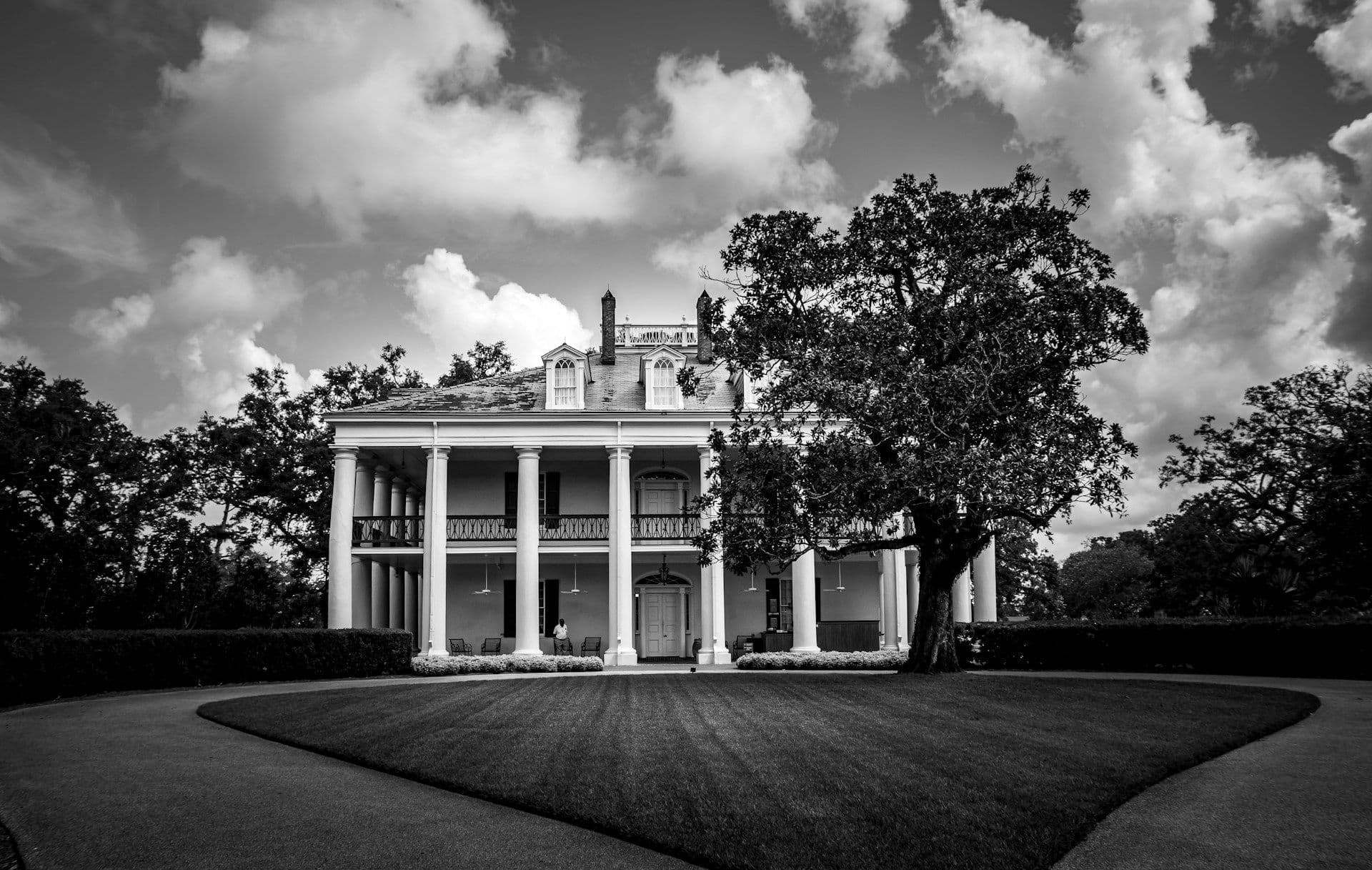
Lafayette to Baton Rouge & Plantation Country Road Trip
Trip Snapshot
- Distance & Drive Time: ~60–80 miles one-way (depending on plantations visited). Lafayette to Baton Rouge is ~55 miles (~1 hour). Baton Rouge to popular plantations like Nottoway or Oak Alley is another 30–50 miles round-trip. Plan for a full day with return, especially if touring multiple sites.
- Best Time to Visit: Spring and fall offer mild weather and colorful gardens at plantations (spring azaleas!). Winter is also pleasant for touring without crowds. Summer brings heat, humidity, and more visitors if visiting June–Aug, go early in the day to beat afternoon thunderstorms and wear light clothing.
- Ideal For: History buffs, architecture enthusiasts, and anyone interested in Louisiana’s antebellum past. Great for families (kids can enjoy big open grounds to run) and photographers the oak alley vistas are bucket-list material.
- Route Summary: Take I-10 East from Lafayette to Baton Rouge (state capital on the Mississippi River). After exploring Baton Rouge, drive south along River Road (LA-1 on west bank or LA-75/LA-18 on east bank) into “Plantation Country.” Visit one or more historic plantation homes (like Nottoway, Oak Alley, Laura). Return via the interstate or continue to New Orleans if making a one-way trip.
- Top Highlights: Touring the Old State Capitol in Baton Rouge (a Gothic castle-like statehouse), strolling LSU’s live oak-shaded campus, driving under canopies of live oaks on River Road, visiting Nottoway Plantation (the largest antebellum mansion in the South), and walking the famed oak alley at Oak Alley Plantation with its 300-year-old oak trees. Also, learning about the complex history of these estates, including the lives of those enslaved, through guided tours.
Route Overview
Starting in Lafayette, head east on Interstate 10 through the Atchafalaya Basin (yes, that awesome swamp again!). In about an hour, you’ll crest the massive I-10 bridge over the Mississippi and land in Baton Rouge. Take the Downtown exit to dive into the capital’s sights. Baton Rouge offers a mix of modern city and deep history: you might begin at the Louisiana State Capitol the new one, a soaring Art Deco skyscraper capitol (you can ride an elevator to the 27th-floor observation deck for a panoramic view of the Mississippi). But the real gem for history lovers is the Old State Capitol, perched on a bluff overlooking the river. This 19th-century Gothic Revival building looks like a castle and even Mark Twain remarked on its peculiar beauty. Inside, it houses a Political History Museum and features a stunning stained-glass dome that will take your breath away. It’s very family-friendly with interactive exhibits. Walk a couple blocks to see Louisiana’s Old Governor’s Mansion (rumored to be modeled after the White House) if you like, or head to the riverfront by USS Kidd (a WWII battleship museum on the water). If time, swing by Louisiana’s Capitol Park Museum for an excellent overview of state history and culture from Mardi Gras costumes to Civil Rights exhibits.
After Baton Rouge, the journey turns back in time along the Great River Road. Cross over to the west bank of the Mississippi via the Horace Wilkinson Bridge (the I-10 bridge) or the Old Bridge (US-190) and head south on LA-1. You’ll drive about 30 minutes through river towns to reach White Castle, home of Nottoway Plantation. As you approach Nottoway, you’ll notice the levee on your left hop up there (there are stairs) for a view: the Mississippi River is just over that mound, often hidden from view by the levee. Nottoway itself is impossible to miss a sprawling white mansion with 22 columns and a pristine lawn. Taking a tour of Nottoway is like stepping into 1859 luxury; at 53,000 square feet, it’s the largest antebellum plantation house in the South. Guides (often in period costume) will lead you through halls of opulent ballrooms, marble fireplaces, and hand-carved mahogany staircases. The house’s immense scale and the story of the family (and enslaved people) who lived here paint a vivid picture of plantation life. (Note: Nottoway also has a restaurant and inn many visitors have lunch or even stay overnight here.)
Continuing south, you can either remain on the west bank or cross to the east bank depending on which plantations you plan to visit. A convenient crossing is the Veterans Memorial Bridge at Sorrento (LA-10 to LA-18 on east bank), especially if heading to Oak Alley or Laura Plantation. If you have time for only one more, Oak Alley Plantation in Vacherie is the iconic choice its quarter-mile alley of 28 live oaks is world-famous. Driving up to Oak Alley, you’ll likely gasp: the view from the gate, straight down that tunnel of moss-draped oaks to the grand Greek Revival house, is like a scene from a film (indeed, many movies have been shot here). Tours at Oak Alley delve not only into the big house and the sugar baron family, but also include moving exhibits on slavery (with restored slave quarters you can walk through). It’s both beautiful and poignant.
Nearby, Laura Plantation offers a Creole plantation experience a bright mustard-yellow raised home where you hear the compelling saga of a Creole family (tours here are often highlighted for storytelling). Whitney Plantation, also in the area, is unique as it’s presented primarily from the perspective of the enslaved and serves as a museum of slavery a powerful visit if you can include it.
As the sun starts to dip, the live oaks cast long shadows across plantation lawns. Many plantations close around 5pm, so plan accordingly. From Vacherie, you can begin the journey back. If returning to Lafayette, the quickest route is to hop on I-10 west at the closest on-ramp (from Oak Alley area, you’d take the Gramercy Bridge to rejoin I-10). The drive back to Lafayette is about 1.5 hours. If your road trip is continuing to New Orleans, you’re actually only an hour or so from the city from Oak Alley some travelers choose to end their day by heading into NOLA, dropping off the rental car there (check one-way rental options). Otherwise, enjoy the ride back through Baton Rouge (maybe catching the pastel colors of a river sunset as you cross the Mississippi again).
By nightfall, you’ll have traversed plantations and parishes steeped in Louisiana’s complex history. This journey is a vivid contrast: from Lafayette’s Cajun prairies to Baton Rouge’s urban beat, then into the tranquil, somber beauty of plantation country where oak trees have silently witnessed the passage of centuries.
Top Stops & Experiences
- Downtown Baton Rouge Don’t just drive through the capital; stop and explore a bit. Highlights include the Old State Capitol (a National Historic Landmark turned museum admission is free, and you can see the gorgeous stained glass rotunda and an immersive theatrical presentation on the “Ghost of the Castle”). Nearby, the Capitol Park Museum (part of Louisiana State Museum) offers two floors of exhibits on everything from LSU football to bayou Mardi Gras traditions to slavery and jazz. Also consider a stroll along the Mississippi River levee the view of the broad river and the USS Kidd destroyer moored there is impressive. (Official tourism: Visit Baton Rouge has info on these sites.)
- Louisiana State University (LSU) If it’s a Saturday in fall, Tiger Stadium will be roaring with college football excitement. But year-round, LSU’s campus is a lovely stop. Towering live oaks and shaded quadrangles make it one of the prettiest campuses in the South. Visit the LSU Lakes (maybe spot the campus’s mascot, Mike the Tiger, in his habitat across from the stadium yes, they have a real Bengal tiger, with an official LSU-managed enclosure open to visitors). The LSU Rural Life Museum (off campus) is another gem an extensive outdoor collection of authentic historic buildings that recreate 18th-19th century rural Louisiana life (operated by LSU, official site).
- Nottoway Plantation Tour the largest antebellum mansion in Louisiana. With 64 rooms, a grand white ballroom, and innovative features (for its time) like indoor plumbing, Nottoway’s scale and luxury astound. The guided tour (through Nottoway Resort’s official tour) shares stories of the Randolph family who built it and the enslaved people who made that lifestyle possible. The grounds include beautiful gardens and views of sugar cane fields and the Mississippi levee. Nottoway also has a small museum exhibit and gift shop. Don’t miss the semi-circular white ballroom it’s an Instagram dream with its white Corinthian columns and crystal chandeliers.
- Oak Alley Plantation The postcard of Louisiana. Oak Alley’s experience begins the moment you step onto the path under its live oaks planted in the early 1700s. Tours of the “Big House” are guided hourly; you’ll learn about the Roman family and later Stewart family, and interesting tidbits (like how they built a levee to protect the house, or the stories of the enslaved head chef whose recipes are known through oral history). A highlight is the slave quarters exhibit very detailed with first-person accounts and sculptures that honor the individuals enslaved there. Take time to enjoy a mint julep from the café (it’s a tradition here) while gazing down the oak lane. Also on site: a blacksmith shop demo and a Civil War tent exhibit. check for any special events like spring arts & crafts or Christmas bonfire nights.)
- Whitney Plantation A different kind of plantation tour, focused on the lives of the enslaved. Whitney (in Edgard, west bank) is the only plantation museum in Louisiana with this exclusive focus. Visitors get an audio-guided tour through original slave cabins, a freedmen’s church, and memorials that list names and personal details of people who were enslaved on these grounds. It’s a profound, educational experience that complements the traditional house tours elsewhere.
- Laura Plantation This Creole plantation in Vacherie is known for its vivid tour based on Laura Locoul’s memoirs you’ll hear about feisty Creole women run business, tales of Br’er Rabbit folklore recorded on-site, and the unique Creole customs that set this place apart. The big house is brightly painted (not the typical white-columned mansion, as Creoles favored color and Caribbean style). The tour also covers the slave quarters and routine, providing a holistic view.If you’re a history enthusiast, doing Oak Alley and Laura (just 4 miles apart) offers a fascinating contrast of Anglo-American vs. Creole plantation culture.
Where to Eat & Stay
- Baton Rouge Bites Before heading to plantation country, grab lunch in Baton Rouge. Local favorites: Parrain’s Seafood (on Perkins Road) serves excellent crawfish étouffée and chargrilled oysters in a casual setting a true taste of Louisiana seafood. For something quick downtown, Poor Boy Lloyd’s is an old-school joint for po’boys and gumbo. If it’s Saturday, you might even try tailgate fare at LSU! Baton Rouge also has up-and-coming foodie spots like Cocha (farm-to-table) or Lavender Indian Cuisine if you crave a change.
- Plantation Lunch Some plantations have on-site eateries. Nottoway’s Mansion Restaurant offers a sit-down lunch (Cajun/Creole dishes think shrimp and grits, fried alligator bites). Oak Alley has a café with tasty sandwiches, gumbo, and the aforementioned mint juleps. Even if you don’t tour Oak Alley, you can stop at their café without paying admission nice to know if you just want a meal under the oaks. Off-site but nearby, B&C Seafood Market & Cajun Restaurant (in Vacherie near Oak Alley) is a beloved local stop for fried seafood platters and po’boys nothing fancy, but authentic (check their official FB or site for hours).
- Evening in Baton Rouge or Lafayette If returning to Lafayette, you might arrive by dinner time. A fun celebratory dinner could be at Jolie’s Louisiana Bistro in Lafayette (contemporary Cajun cuisine, art-filled interior) or Blue Dog Café (Cajun eats in a gallery of artist George Rodrigue’s famous Blue Dog paintings talk about dinner with character!). If overnighting in Baton Rouge instead, try Tsunami a sushi bar atop the Shaw Center downtown, with a terrace overlooking the Mississippi (sunset views with sushi rolls, a surprising but excellent combo!). For something heartier, The Chimes by LSU is iconic for Louisiana dishes and a huge beer selection (and they’re open late, popular with the college crowd).
- Where to Stay You have options:
- Baton Rouge: Staying a night in BR lets you explore the capital by night. Watermark Baton Rouge (Autograph Collection) is a boutique luxury hotel in a historic building downtown walk to attractions. Hilton Capitol Center is another downtown choice, in a 1920s building with river views. If you prefer near LSU, The Cook Hotel at LSU is actually on campus and quite comfortable (and you can walk around the lakes in the morning).
- Plantation Stay: For a unique overnight, Nottoway Plantation operates as a resort you can sleep in gorgeously appointed rooms in the mansion or cottages on the grounds. Waking up on plantation grounds, strolling the veranda with a coffee, is a step back in time (with modern comforts). Oak Alley offers a few quaint cottages for overnight stays as well imagine having the entire oak alley to yourself in the early morning or after the crowds leave! These book up well in advance (reserve via Oak Alley’s official site). Houmas House (another grand plantation between Baton Rouge and New Orleans) also has a beautiful inn on its property (The Inn at Houmas House) even if Houmas wasn’t on your day-stop list, you could stay there for a pampered plantation experience and tour it the next day.
- Back to Lafayette: It’s entirely feasible to do the whole trip in one long day and return to Lafayette by late evening. If so, rest your head at your Lafayette hotel perhaps the Juliet Hotel downtown (boutique, convenient for walking to live music at night) or a familiar comfort like Hilton DoubleTree Lafayette (overlooking the Vermilion River). By staying in Lafayette, you’ll be ready for whatever Acadiana adventure tomorrow brings (or able to return your rental car first thing if it’s the end of your journey).
Practical Tips
- Plan Your Plantation Tours: Most plantation homes offer tours at set times generally on the hour or half-hour. It’s wise to check the official websites for tour schedules and to pre-book tickets, especially on weekends. Oak Alley and Laura, for example, have tours roughly every 30 minutes, but capacity is limited. If you want to see multiple plantations, consider the timing and drive distances: e.g., catch a late morning tour at Nottoway, then an early afternoon tour at Oak Alley (about 40 minutes apart driving). Note that some plantations close on certain holidays or have shorter hours in winter.
- Attire & Comfort: Dress in lightweight clothing and comfortable shoes. Plantations involve walking and often climbing stairs. Summer humidity can be intense hats, sunscreen, and carrying a bottle of water are highly recommended. In warmer months, an umbrella or rain jacket is good to have handy in case of sudden showers (and it doubles as sun shade). Indoors, plantations are air-conditioned minimally or not at all (to preserve interiors), so during heat waves, tours can feel stuffy a handheld fan isn’t a bad idea.
- Traffic Advisory: Baton Rouge is notorious for traffic jams on I-10, especially at the Mississippi River Bridge. Try to reach Baton Rouge between 10am and 3pm, avoiding morning and evening rush hours. If you find yourself in peak traffic heading back, an alternate is to take US-190 (the older bridge) across the river or take I-12 around north of Baton Rouge. Also, on LSU football home game days (usually Saturdays in fall), expect heavy traffic near campus and on I-10 plan accordingly (or join the tailgate!).
- Safety & Courtesy: The River Road area is generally safe and rural. While visiting plantations, you’ll mostly be on private property or tourism-focused sites. Do respect boundaries if a site is closed or an area roped off, don’t venture there (some old structures can be fragile). When driving the levee roads and rural highways, stick to speed limits; some roads are narrow atop levees. At plantations, photography is usually allowed outdoors but often limited inside the homes check with your guide. And of course, when guides or exhibits address the painful history of slavery, maintain a respectful demeanor; these stories are important and often emotional.
- Extra Stops: If you have extra time, consider a couple of bonus stops: St. Francisville north of Baton Rouge for more historic homes and a cute town, or Donaldsonville on the River Road to see its historic district and the River Road African American Museum (a small but impactful museum). These could be whole trips on their own, but worth noting if you’re making a weekend of it.
- Weather Watch: In plantation country (and all of south Louisiana), summer thunderstorms can be fierce but usually brief. If the forecast shows storms, don’t be discouraged just be ready to dodge inside during downpours (good thing you’re touring houses!). In the unlikely event of a hurricane watch or severe weather alert, heed local advice this would be rare for a short trip, but worth keeping an ear on local news during hurricane season.
Rentals & Logistics
This road trip involves city driving, interstate cruising, and country byways having a reliable car is a must. Rent your car in Lafayette with confidence: major rental companies often allow drop-off in another city if you need (say, ending in New Orleans), but double-check any one-way fees. If you’re returning to Lafayette, it’s an easy round-trip. A mid-size or full-size car might be comfy for this journey, especially if you have companions you’ll appreciate the space after a day of touring. All the sites have parking lots (free parking at plantations and Baton Rouge attractions), though Oak Alley’s lot can fill on busy days (arrive early or be ready to park along the plantation fence and walk a bit).
Before leaving Lafayette, input your destinations into the GPS a little prep goes a long way since cell signals can drop in very rural spots. Consider downloading maps for offline use. Keep some cash on hand; a few smaller museums or food stands along the River Road might prefer it, though most larger sites take cards.
As you embark, remember that you’re covering a lot of history in a short distance. It’s one of the beauties of Louisiana so much past and present intertwined along that great river. With your rental car giving you the freedom to stop anywhere, you can truly soak it in at your own pace. So go ahead, book that Lafayette rental car and set off on a journey through Louisiana’s capital city charisma and plantation country panoramas. This is one drive where the road truly is an avenue through time and you’re in the driver’s seat of discovery. Safe travels, and enjoy every moss-draped, story-filled mile!
Our Most Popular Vehicles



